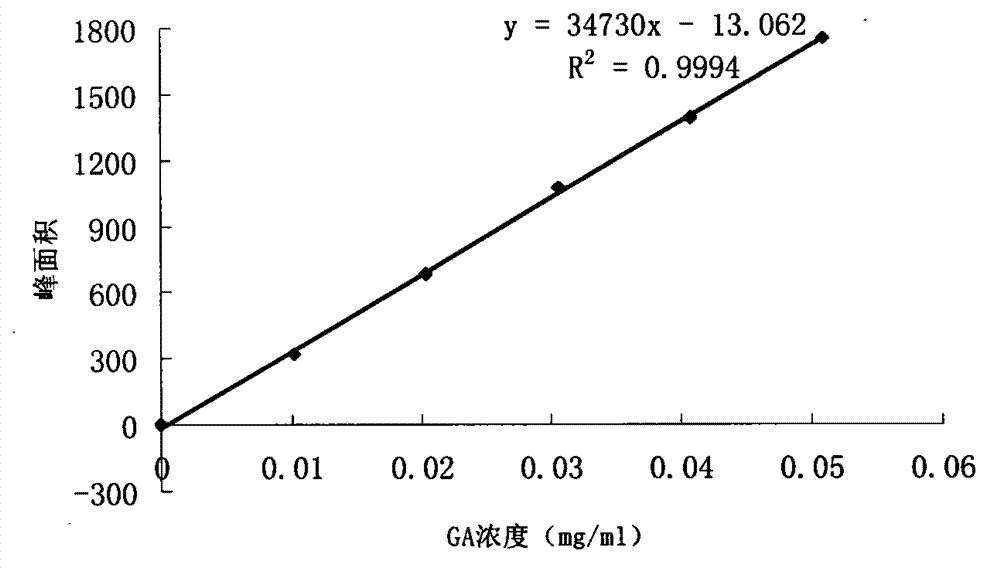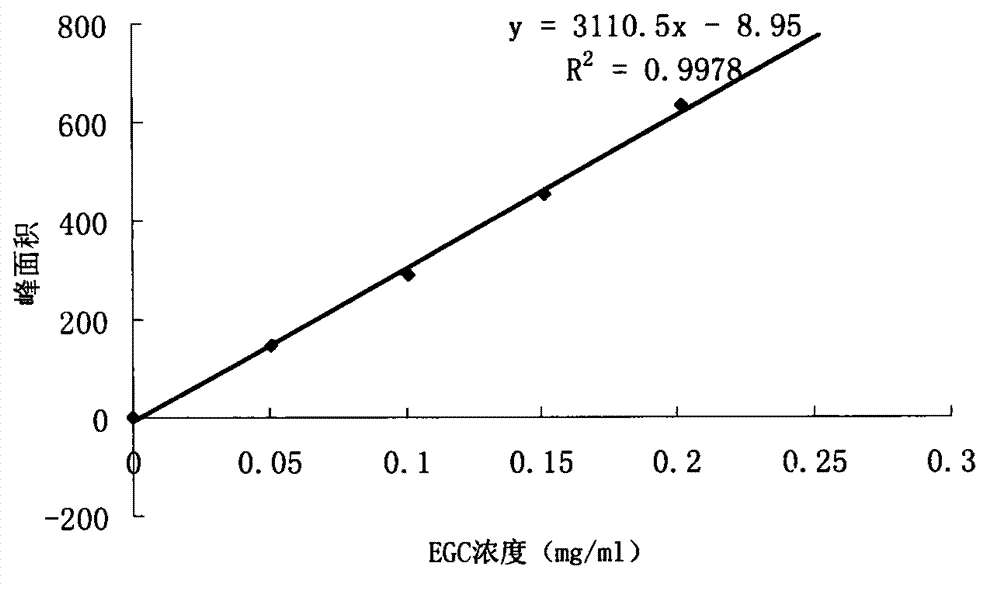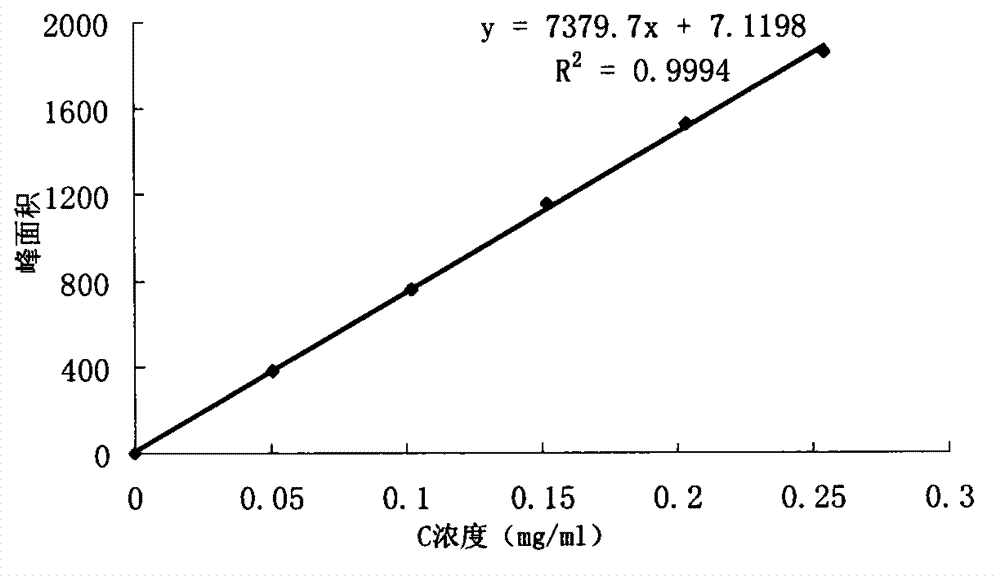Method for detecting content of catechinic acid in baked product
A detection method, catechin technology, applied in the field of food analysis, can solve problems affecting the accuracy of detection results and other issues
- Summary
- Abstract
- Description
- Claims
- Application Information
AI Technical Summary
Problems solved by technology
Method used
Image
Examples
Embodiment 1
[0141] Embodiment 1: Determination of the content of catechins in tea bread
[0142] 1. Instruments and reagents
[0143] High-performance liquid chromatography (Agilent 1200); chromatographic column Agilent SB-C18 (4.6 × 250mm, 5 μm); high-speed centrifuge (Beckman Coulter A64R refrigerated high-speed centrifuge); one-ten-thousandth balance (DualRange XS105); Kunshan Ultrasonic Instrument Co., Ltd. KQ-500E); water bath (Tianjin Zhonghuan Experimental Electric Furnace Co., Ltd. XMTD-2).
[0144] Test product: Pu'er tea bread (Pu'er tea extract is added to the raw material, and the amount added is 0%-4%)
[0145] Reagents: chromatographically pure methanol; chromatographically pure acetic acid; chromatographically pure formic acid; chromatographically pure acetonitrile.
[0146] Reference substances: gallic acid, catechin, epicatechin, China Institute for the Control of Pharmaceutical and Biological Products (for content determination).
[0147] Epigallocatechin, epigallocat...
Embodiment 2
[0182] Embodiment 2: Determination of the content of total catechins in tea bread
[0183] Various conditions in embodiment 1 are changed, also can obtain and embodiment 1 similar result, as: change following condition:
[0184] Step (1) To prepare the test solution, weigh 5-15g of pulverized baked food samples into 50-200ml of extract solution, shake the water bath in a water bath at 60-80°C for 20-40min, cool to room temperature, and shake well , pour it into a centrifuge tube, and centrifuge at room temperature 3000-4000r / min for 5-15min; collect the supernatant, and filter it with a 0.45μm filter membrane, and the obtained filtrate is used as the test solution;
[0185] The extracting liquid is composed of 60%-80% of methanol, 20%-40% of water and 0.1%-0.5% of formic acid.
[0186] Step (2) preparation of the reference solution refers to: respectively weigh 3-8 mg of gallic acid, 3-8 mg of catechin, 3-8 mg of epicatechin, 3-8 mg of epigallocatechin, and 3-8 mg of epicatec...
PUM
| Property | Measurement | Unit |
|---|---|---|
| Wavelength | aaaaa | aaaaa |
Abstract
Description
Claims
Application Information
 Login to View More
Login to View More - R&D
- Intellectual Property
- Life Sciences
- Materials
- Tech Scout
- Unparalleled Data Quality
- Higher Quality Content
- 60% Fewer Hallucinations
Browse by: Latest US Patents, China's latest patents, Technical Efficacy Thesaurus, Application Domain, Technology Topic, Popular Technical Reports.
© 2025 PatSnap. All rights reserved.Legal|Privacy policy|Modern Slavery Act Transparency Statement|Sitemap|About US| Contact US: help@patsnap.com



